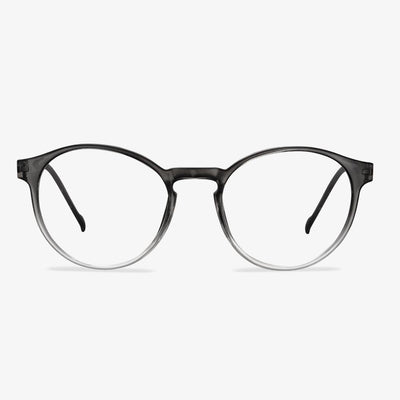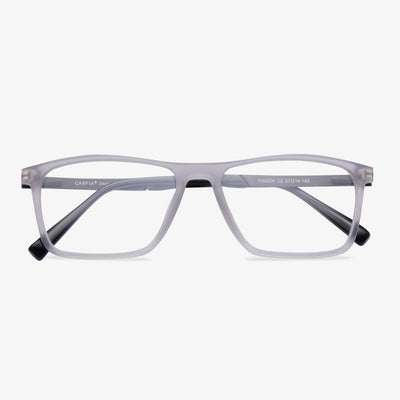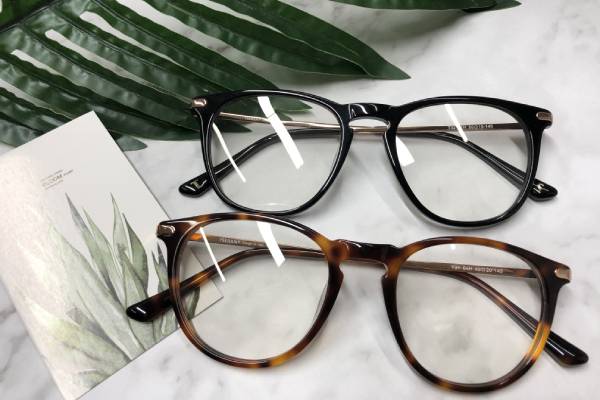What is the progressive multifocal lens?
The lens of progressive multifocal glasses can change the refraction of the lens at the upper part of the central channel of the line of sight, which can effectively solve the difference of refraction when people view objects at different distances from long, medium, and short distances. Depending on demand, people have the flexibility to change or compensate vision according to visual distance, making it easier to help to adjust your vision in a variety of situations.
The nose pad is very important.
It could be that the nose pad is too hard. You can replace it with a non-marked soft nose pad. It is recommended to choose a thin and long or broad-leaved nose pad, moderate hardness, which can effectively disperse the force of the nose, with stable support, bringing comfortable wearing. It avoids a soft nose pad on the bridge of the nose because of sweating or a long time to wear left indentation. Eyeglass frame nose pads are in direct contact with the bridge of the nose, and too hard nose pads can damage the skin around the bridge of the nose. Therefore, try to choose a silica gel nose pad and other soft materials. The first one is that the silicone has good softness and will not damage the skin. The other is that it can fit perfectly with the bridge of the nose without foreign body feeling.
Choose rectangular glasses based on the shape of your face.
If you belong to the oval face, do not choose the too large or angular glasses frame. And do not choose long or square ones. It will be easy to elongate the face and affect the overall appearance. The shape of a round face is the opposite of a square face, so the buying principle of the glasses is basically the opposite of a square face. You need a more angular one to improve the shape of the face, but you need a square face (elongate) principle, that is, use a lower height, higher temple position of the frame.
The price of prescription glasses
You need a current (unexpired) prescription to order glasses online. You will enter your prescription and select the available lens options during checkout. Prescription glasses start at about $40. Single vision lenses are free when you buy the frames, and progressive wireless lenses typically cost an extra $80 or so. Other lens options include clear lenses with no extra charge, basic tone lenses (for sun protection) with the price of $40,polarized-tone lenses (for protection and glare reduction)with the price of $50, and transition lenses (for indoor and outdoor use) with the price from $65.
Why does an optical shop carry out the preferential activity?
These activities can attract a steady flow of traffic, but to keep the original flow out. It helps improve the store in the community awareness, expand visibility. It can attract new customers to the store, encourage old customers to introduce new customers, and stimulate old customers to buy again. And then increase store sales and add new customers.
Warby Parker
WARBY PARKER, one of the most popular eyewear brands in the United States, set up its own experience store in New York City in 2014, where consumers can walk in and out and try them on. They founded a rebellious spirit and lofty goals: to create high-quality, classic production, and the pursuit of fashion and high-quality glasses. Warby Parker's overall design is minimal. They provide many services to help you choose the frame. Almost every frame has a try-on picture and full view and provides a virtual try-on service. Free trial at home, physical experience stores, online virtual tries, and unconditional returns within 30 days really make you feel free.
Advantages of progressive lenses
1. The appearance of the lens is like a single vision lens, and the dividing line of the degree change cannot be seen. Not only is the appearance beautiful, but more importantly, it protects the age privacy of the wearer. There is no need to worry about leaking the age secret due to wearing glasses.(https://www.koalaeye.com/collections/progressive-glasses)
2. Since the change of lens power is gradual, there will be no image jump. It is comfortable to wear and easy to adapt.
3. Because the degree is gradual, the replacement of the adjustment effect is gradually increased according to the shortening of the short distance. There is no adjustment fluctuation, and it is not easy to cause visual fatigue.
4. Clear vision can be obtained at all distances in the visual range. A pair of glasses meet the use of long-distance, near use, and various distances in between. It is especially good for teachers, doctors, music workers, and computer operators because these people not only need to see far and near objects clearly, but most of the time they also need to be able to see objects at intermediate distances such as blackboards, piano scores, and computer screens. This is not possible with lenses other than progressive lenses.
5. At present, both internal and external ophthalmologists agree that young people should wear low-degree convex lenses when reading and writing to reduce near-use adjustment, thereby alleviating or preventing the occurrence and development of myopia. This gives the progressive multifocal lens a new meaning and mission. Physiology found that excessive use of the eyeball adjustment function can form 'accommodative spasm' or pseudo myopia. Continued development can produce longitudinal eye axis elongation and induce 'true myopia' or axial myopia. The external luminosity of the progressive lens can be artificially added to the progressive luminosity. The upper is used for looking far, and the below is used for looking near, which makes the eyeball relax and over-adjust. The ever-changing luminosity of the lens replaces the 'accommodative power' that should have been activated, blocking the vicious circle of adjusting the eye axis elongation, making the eye not easy to fatigue, and slowing the development of myopia.











































